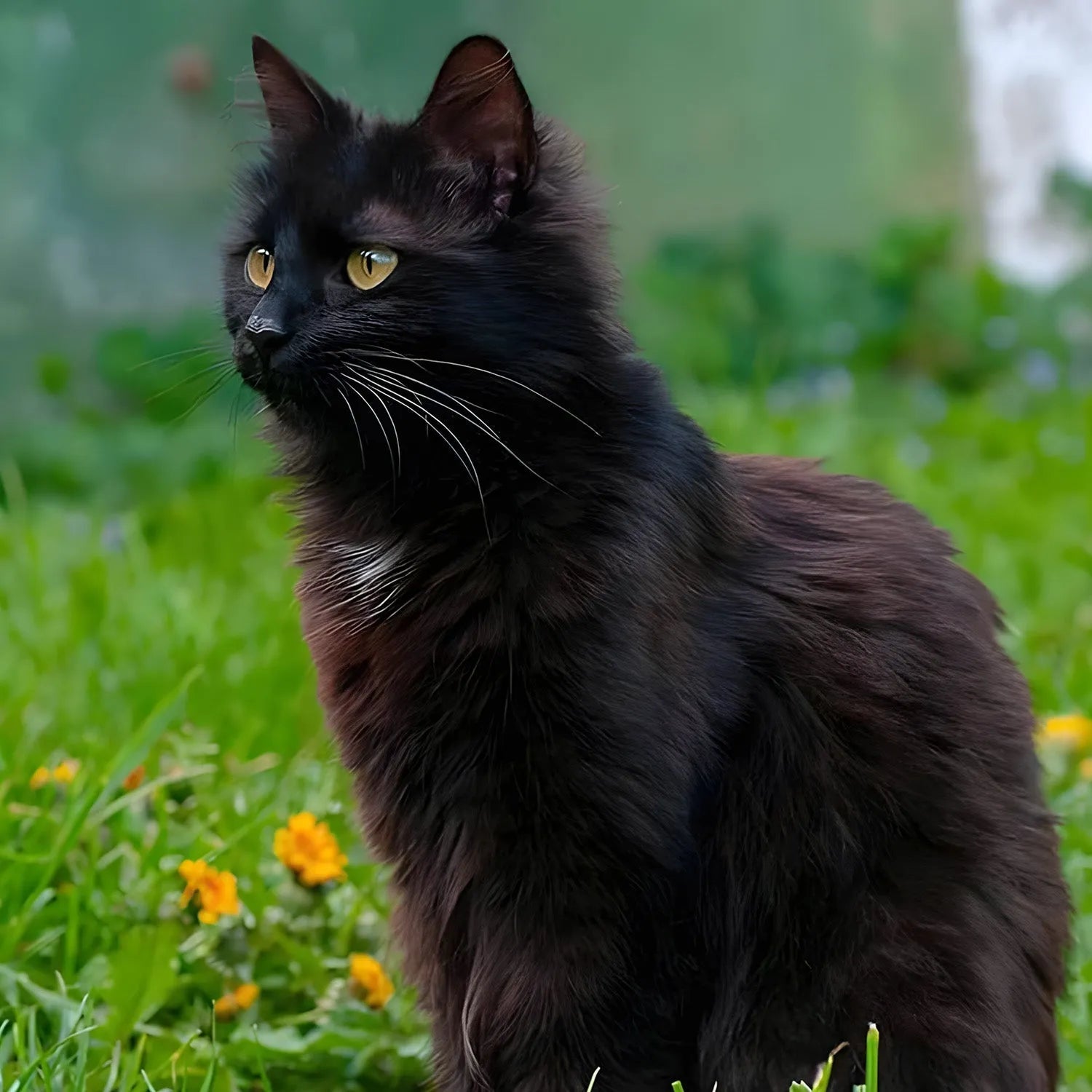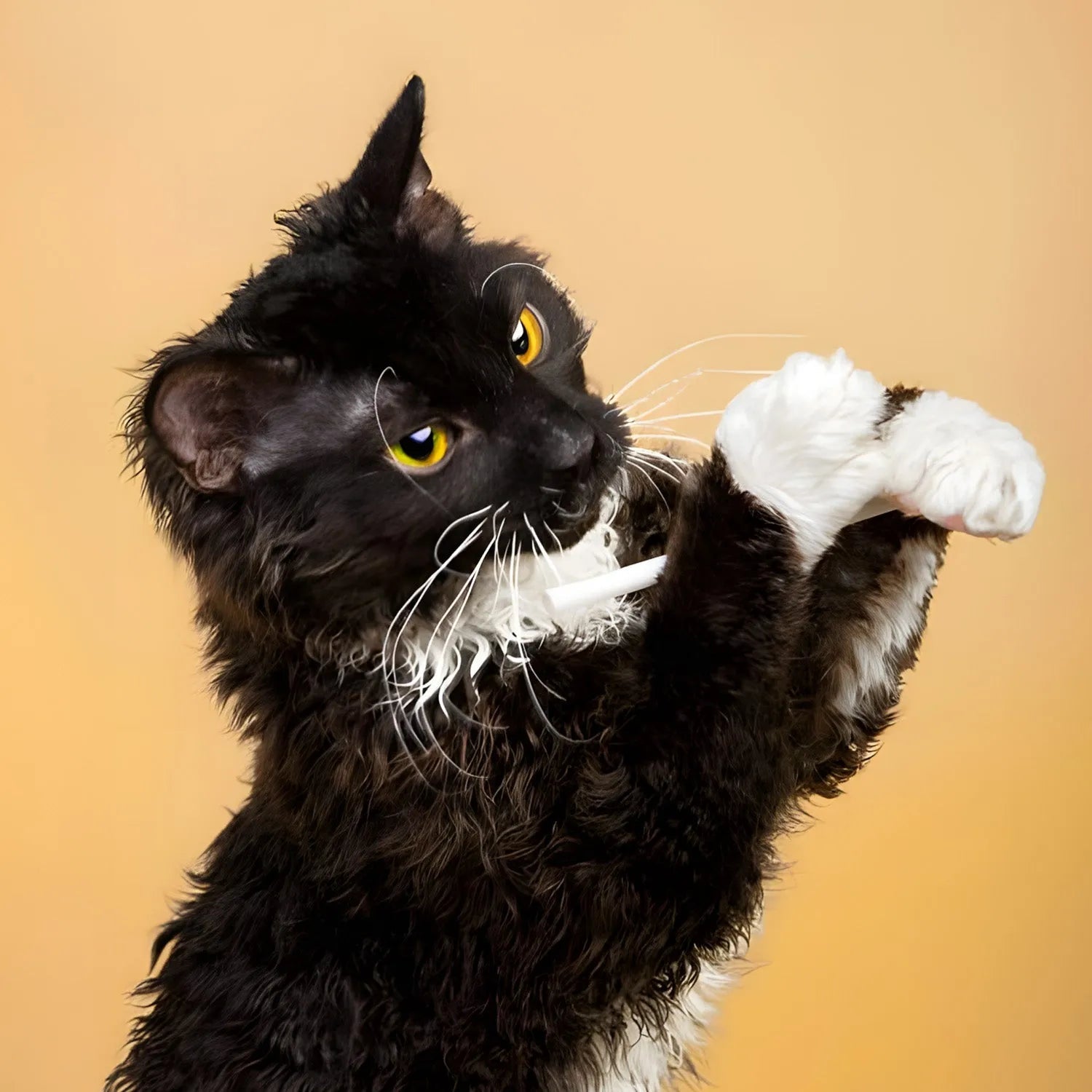Persian: The Luxurious and Affectionate Feline
Introduction
The Persian cat is one of the most beloved and recognizable cat breeds in the world, admired for its long, flowing coat, round face, and calm demeanor. Known for their gentle and affectionate nature, Persian cats are the epitome of luxury and charm. These cats are perfect for those who appreciate a low-energy, easygoing companion that enjoys lounging and snuggling. However, with their stunning looks come specific grooming needs that require regular attention. In this blog, we’ll explore the Persian cat’s lifestyle, behavior, grooming needs, and how it interacts with humans and other pets.
Ratings (1-5)
-
Environmental Adaptability: 3
-
Food Consumption: 3
-
Need for Companionship: 4
-
Trainability: 3
-
Tolerance of Children: 4
-
Ease of Domestication: 4
History and Origins
The Persian cat has a long and rich history dating back to the 1600s when they were first imported to Europe from Persia (modern-day Iran). These cats quickly became a symbol of luxury and elegance in royal and aristocratic households. Over time, breeders in Europe, especially in Britain, refined the breed, enhancing the Persian’s distinctive flat face and long coat. Today, Persians are one of the most popular breeds in the world, recognized by all major cat associations. Their appeal lies not only in their striking appearance but also in their calm and affectionate personalities.
Physical Characteristics and Colors
Persian cats are medium to large in size, with a strong, sturdy build. Their most recognizable feature is their long, luxurious coat, which is thick and silky, requiring regular grooming. The breed has a distinct flat face with a short, snub nose, large round eyes, and small rounded ears. This "doll-faced" appearance has been further exaggerated in modern breeding practices, especially in show-quality Persians.
Persians come in an array of colors and patterns, including solid white, black, blue, cream, and red, as well as a variety of patterns like tortoiseshell, tabby, and bicolor. Their expressive, round eyes are usually shades of blue, green, or copper, depending on the coat color. Despite their delicate appearance, Persians are quite robust and can live long, healthy lives when properly cared for.
Lifestyle and Behavior
Persian cats are known for their calm and gentle temperament. They are quiet, laid-back cats that enjoy spending their time lounging in comfortable spots around the house. Persians are not overly active or playful but will engage in interactive play if gently encouraged. They prefer a serene environment and do not handle loud or chaotic surroundings well. Persians are often described as "lap cats" because they love to cuddle with their owners and are content to sit by your side while you relax. Their mellow nature makes them ideal companions for individuals or families who prefer a more relaxed pet.
While Persian cats enjoy the company of their humans, they are not particularly needy or demanding. They are independent enough to entertain themselves and don’t mind spending time alone while you’re at work. However, they do appreciate affection and will seek it out when they are in the mood for cuddles or attention.
Trainability and Intelligence
Persians are intelligent but are not known for being particularly active or trainable compared to more energetic breeds. They can learn basic commands and use a litter box, but they are not as likely to engage in tricks or more advanced training like some other breeds. Persians prefer a calm and predictable routine, and while they are curious, they are not as adventurous as some other breeds. Positive reinforcement, such as treats and praise, can help train your Persian cat to follow simple commands, but they are more likely to appreciate gentle interaction than rigorous training.
Social Behavior and Human Interaction
Persian cats form strong bonds with their human families and are known for their loving and affectionate nature. They thrive on companionship and enjoy being in the presence of their owners, though they are not overly clingy. Persians will happily curl up next to you on the couch or sit in your lap, providing quiet companionship. Their calm demeanor makes them suitable for households where they can receive plenty of love without the hustle and bustle of a busy, noisy environment.
While Persians enjoy being petted and loved, they are also content to have their own space when needed. They are not as demanding of attention as some more vocal or active breeds, but they do appreciate affection and interaction when it is offered. Their quiet and gentle nature makes them great pets for individuals seeking a low-maintenance but loving companion.
Compatibility with Children and Other Pets
Persian cats are generally tolerant of children and can get along well in a family setting. Due to their calm nature, they may not enjoy rough handling, so it's essential to teach children to be gentle and respectful when interacting with them. Persians tend to prefer a more relaxed environment and may retreat to a quieter space if things become too noisy or chaotic.
Persians also tend to get along well with other pets, including dogs, as long as they are properly introduced. Their mellow demeanor allows them to coexist peacefully with other animals, though they are not likely to engage in rough play. Persians are typically happiest in homes where they can receive love and attention without the stress of a high-energy environment.
Grooming and Care
The most significant aspect of caring for a Persian cat is its grooming needs. Due to their long, thick coat, Persians require regular brushing—ideally daily—to prevent mats and tangles from forming. Mats can become painful and uncomfortable for your cat, so frequent grooming is essential to maintain a healthy coat. Use a metal comb or soft brush designed for long-haired cats to keep the fur smooth and shiny.
In addition to regular brushing, Persians may need occasional baths to keep their coat clean, as their long fur can accumulate oil and dirt. Their flat faces also make them prone to tear staining, so their eyes should be gently cleaned with a damp cloth regularly.
Persians are prone to dental issues, so regular tooth brushing is recommended. It’s also essential to keep up with regular vet visits to monitor for any potential respiratory issues that may arise due to their brachycephalic (flat-faced) structure.
Health and Lifespan
Persian cats are generally healthy, but they are prone to certain genetic and breed-specific health conditions, particularly due to their flat-faced structure. One of the most common issues is brachycephalic airway syndrome, which can cause breathing difficulties in some cats. Additionally, Persians may be more susceptible to dental problems, eye issues (such as tear duct blockages), and polycystic kidney disease (PKD).
Regular veterinary check-ups, a balanced diet, and maintaining good grooming practices are essential to keeping your Persian healthy. With proper care, Persians typically live 12-15 years or more.
Environmental Adaptability
Persians are indoor cats that thrive in calm, quiet environments. Their thick coat makes them more suited to cooler climates, and they can become overheated in hot weather. Persians are happiest when they can enjoy a serene indoor space with plenty of soft spots to lounge on and windows to gaze out of. Their relaxed personality makes them ideal for apartment living or homes without a lot of noise and activity.
Feeding Requirements
A balanced diet is crucial for maintaining the health and energy levels of Persian cats. High-quality cat food that is rich in protein is recommended to support their energy needs. Fresh water should always be available. Because Persians are not overly active, it’s essential to monitor their food intake to prevent obesity. Consult your veterinarian for specific dietary recommendations based on your cat's age, weight, and health needs.
Conclusion
The Persian is a luxurious and affectionate breed that brings calm and beauty to any home. Their sweet, laid-back nature makes them wonderful companions for individuals or families who appreciate a relaxed, loving pet. While their grooming needs are more demanding than some other breeds, the rewards of having a stunning, affectionate Persian cat in your life are well worth the effort.
For more information about other cat breeds and pet care tips, stay tuned to our blog!
References:
-
Thompson, A. (2021). "The Luxurious and Calm Persian Cat." *Journal of Feline Studies*, 35(3), 215-230.
-
Richards, L. (2020). "Caring for Your Persian Cat: A Comprehensive Guide." *Cat Lover’s Magazine*, July issue, pp. 25-33.
-
Harris, E. (2019). "Health and Wellness in Persian Cats." *Veterinary Journal*, 79(2), 123-137.


